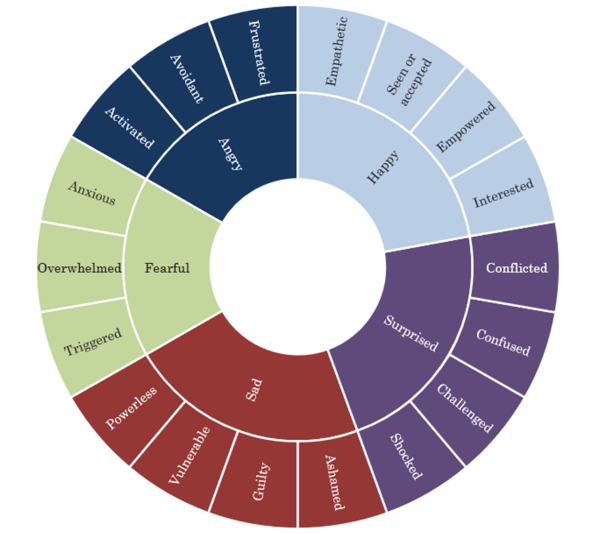Amid a cacophony of opinions on trigger warnings, listening to students can teach us how to build a university in which challenging ideas and student care both matter.
It’s often forgotten that students and educators routinely navigate sensitive and challenging content in teaching and learning. It isn’t about excluding content to “protect” or “coddle” students – but it is about fulfilling our duty of care and maximising the benefits of learning about emotionally challenging content.
Addressing how students navigate challenging content
Empirical evidence about how university students navigate emotionally challenging content, particularly for distance-learning students, is limited.
So I led a two-year educational research project in partnership with Open University (OU) undergraduate criminology students to investigate how distance learners experienced working with sensitive topics.
We used mixed research methods to assess content notes and student-facing guidance on studying emotive topics as part of a criminology module in which students regularly engage with challenging topics including premature deaths, violence and injustice.
We found that many students arrived in higher education with lived experience of systemic oppression and injustice, which motivated their study. For example, one student said: “I chose to study criminology because I was in an abusive relationship [that] resulted in me getting stabbed. I used criminology to help my understanding of why and to get a better comprehension of the events that took place.”
How we teach challenging topics is important for all students, but it’s particularly so for those with lived experience.
Many students arrive with skills in navigating emotionally challenging and demanding situations. With care and support, they can successfully apply skills to learning about challenging topics, with positive and validating results, as with this student, who said: “It made me think back to when I was in similar situations. It made me grateful that I got out. It has actually helped in a way to think about these things. It’s a reminder of my strength and courage.”
Building emotional resilience
Drawing on trauma-informed educational practice in social work education, our integrative, skills-based framework doesn’t dismiss students as “snowflakes”, rather it engages with their strengths, capacities and lived experiences.
Emotional resilience is a universally relevant skill set for all educators and students, which can certainly be supported in higher education. Below are four key ways in which you can embed emotional resilience in the curriculum (for more, see our educator’s guide):
1. Acknowledge the breadth of emotional responses
While much attention has been on negative distress and triggers, students reported a much wider range of emotional responses across the spectrum (see figure 1 below).

Including a student-facing guide can help to normalise both emotional responses in learning and impacts on student well-being. This should provide strategies and resources to help students acknowledge and navigate emotional responses and can be a great way to start a conversation.
2. Affirm existing emotional resilience skills
Students already had many skills from their personal and professional lives to manage emotionally challenging situations that could be affirmed, developed and/or applied to their studies. One student noted: “When I notice an emotion is starting to consume me, that’s when I take a step back. I guess it’s about listening to my body. I sit back, try to ground myself and then I start to go through the tough process of what would help more and what I need.”
You can design learning opportunities for students to identify, share and try these strategies throughout your course, such as including an online or face-to-face study skills session, or using short clips from the emotional resilience video series and/or audios to design learning activities to prompt individual reflection, small group discussion or use digital platforms to host discussions anonymously.
3. Integration tools to activate emotional resilience skills
Many students in our project did not need to use content warnings in their studies. However, for students who did, they were crucial in helping them engage with content that was emotionally challenging or demanding for them, as this student remarked: “I was more prepared for what was coming; I could make myself as calm as possible before embarking on the sensitive material. If the warning was not there I would have dissociated almost immediately.”
Content notes can remove a barrier for students to engage with learning while at the same time protecting their well-being. This is a win-win, so it’s well worth considering using them in your teaching.
This educator-facing content note guidance offers an approach to help identify and then label potentially challenging content to your students. You could also support study choices by providing comprehensive information about course content at registration.
4. Signpost at the outset within and outside the university
Students can easily feel overwhelmed by the amount of information they receive from their university. They told us that they wanted information to be more easily accessible, including clear signposting to support services.
Consider offering signposting information at multiple points in your course, for instance a slide at the end of a lecture or seminar, in module handbooks, reading lists, in your virtual learning environment and emails.
Perhaps the time has finally come for academia to reckon with its own complicated relationship with emotion. Emotional responses can too often be construed as disruptive and irrational, as a threat to “calm, rational and reasonable” academic debate and freedoms.
For students and educators, being “emotional” can be seen as a sign that we do not belong, that we should leave because we just cannot handle challenging ideas.
This dismisses the extent to which many educators and students have lived through and survived challenging situations – when, in fact, the wisdom gained along the way has the potential to enrich not only student learning but our subjects and our institutions, too.
Julia Downes is a senior lecturer in criminology at the Open University who supports distance students to learn about sensitive topics including violence, trauma and injustice.
If you found this interesting and want advice and insight from academics and university staff delivered direct to your inbox each week, sign up for the THE Campus newsletter.




comment